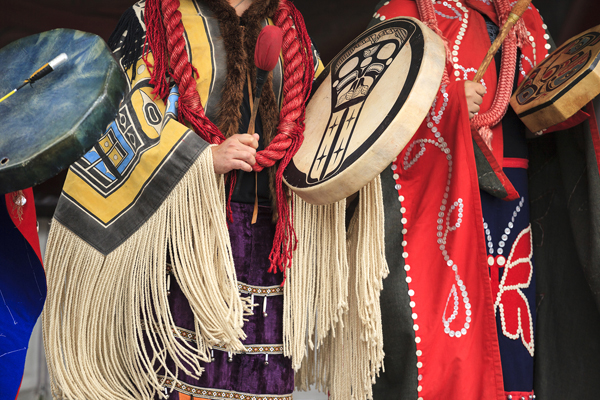Language Matters: Safe Communication for Suicide Prevention
This booklet was created by the Public Health Agency of Canada in partnership with Centre for Suicide Prevention and l’Association québécoise de prévention du suicide.
Safe communication for suicide prevention
Using language that is helpful and respectful encourages an environment free of stigma, where we can talk more openly and safely about suicide and its prevention.
Words matter in a world where silence or insensitivity can make matters worse.
The more we are open and safe in our communication, the more likely it is that people can offer or seek help.
Put people first
Using people-first language avoids stigmatizing words or phrases and emphasizes people while respecting differences and experiences, rather than referring to their actions, conditions, or diagnoses.
People-first language:
- People with (…mental illness, depression, addiction, etc.)
- Person who has died by suicide
- Person thinking about suicide
- People who have experienced a suicide attempt
Problematic language:
- These/those people, the mentally-ill, the depressed, addicts, etc.
- Suicide victim, suicidal, contemplators, attempters

Download the alternative format
(PDF format, 718 KB, 9 page)
Organization: Public Health Agency of Canada
Type: Booklet
Date Published:2018-12-20
Helpful tips:
- Wherever possible, avoid the use of labels and acronyms when referring to or addressing people.
- Use neutral and inclusive words and phrases to respect people and their experiences.
- Carefully consider the choice of words around the issue of suicide and people. Depending on the audience (context, preference or culture) alternative language may be appropriate. The term survivor (e.g. survivors of suicide loss, suicide attempt survivor) may not resonate with everyone. The phrase ‘people impacted by suicide’ is generally considered more neutral and inclusive.
Other examples of people-first language
- People bereaved by suicide
- Person impacted/affected by suicide
- People with lived experience related to suicide
Use safe language
It is important that language about suicide is careful and factual. When we replace problematic language with neutral and respectful language, we help shift how society reacts to and understands suicide. We can make the conversation about suicide safer.
Safe language:
- Die by suicide
- Died by suicide
- Death by suicide
- Suicide attempt
- Attempted suicide
- Populations with higher rates of suicide
- Populations with potentially high risk for suicide
- Factors that may increase people’s risk for suicide
- Social and economic costs associated with suicide
Problematic language:
- Commit suicide
- Committed suicide
- Successful suicide
- Completed suicide
- Failed suicide
- Failed attempt
- Unsuccessful attempt
- Incomplete suicide
- High-risk people/ populations/groups
- At-risk
- Vulnerable or susceptible
- Those people/populations/groups
- Burden of suicide
The term ‘committed’ is stigmatizing as it implies someone is criminal or immoral or has committed an offence. Suicide is not a crime. It was decriminalized in 1972. Recent amendments to the Criminal Code of Canada (section 241) refer to die by suicide rather than ‘committed suicide’.
Suicide is a tragic outcome of many complex factors with lasting impacts; it is never about success or failure. It is not something to achieve or finish like a task or project.
Suicide attempt is not about success, failure or completion. Language about suicide should be factual and careful. People die by suicide or attempt to die by suicide. People may have lived through a suicide attempt or been affected by the suicide attempt of someone. Using safe language avoids words that describe suicide in a positive or negative way.
Using neutral, factual and respectful words is far less stigmatizing. Some descriptive language can have negative connotations. The way we communicate about suicide needs to avoid further stigma and focus on prevention.
Images matter too

Two Indigenous dancers drumming in a traditional celebration

Two pairs of hands holding a seedling to plant

Group of six people with their hands stacked on top of each other showing togetherness

Group of five youth sitting together on a step outdoors in conversation

Two pairs of hands clasped together symbolizing hope and help
Safe images:
- Images need to be consistent with safe language and communication for suicide prevention.
- Images that convey a sense of belonging or community, a sense of hope, and healing and recovery are more consistent with safe communication. Images are most effective when they reinforce the message that no one is alone, that help is available and that everyone's life matters. Safe communication for suicide prevention means that words and images are well-planned, helpful and respectful.
Problematic images:
- Images that are negative, violent or graphic tend to be problematic. When images reinforce stereotypes or aspects of suicide, they can be stigmatizing, unhelpful and unsafe. Images of broken minds, fallen people or methods and locations of suicide (firearms, substances, bridges, etc.) are examples of images to avoid.
Common dos and don'ts
Safe messaging:
- Communicates that suicide is a public health and safety issue.
- Explains that suicide is a complex issue that can affect anyone and takes advantage of opportunities to inform people while focussing on prevention.
- Addresses a balance of protective and risk factors associated with suicide.
- Balances the use of statistics on suicide with enough context about the issue. Uses credible sources and accurate statistics about suicide.
- Uses clear, neutral and people-first language.
- Avoids detailed descriptions or comparisons of suicides (e.g. methods/means, locations, personal information).
- Tailors messaging to audiences with content that is age, gender, culturally appropriate and effective.
- Communicates about suicide with care and compassion by considering impacts on people.
- Ensures communication about suicide is safe and effective by consulting relevant resources as needed (e.g. guidelines for suicide reporting).
- Uses neutral, life-affirming and positive visuals to convey hope, available help and healing.
- Provides helpful information and contact details for appropriate supports and services.
Problematic messaging:
- Communicates about suicide in a way that sensationalizes or stereotypes suicide and the people impacted.
- Magnifies or minimizes the causes or responses to suicide.
- Suggests suicide is inevitable or not preventable.
- Links suicide only with certain populations.
- Lists risk factors (e.g. resembling a checklist) without acknowledging or including broader factors, including factors that protect against suicide.
- Focuses on statistics without adequate context or resources (data limitations and relevance).
- Uses jargon, or technical, outdated or stigmatizing language.
- Includes details or descriptions about suicide death or people who have died by suicide.
- Uses the same message regardless of the characteristics and needs of the audiences.
- Includes content that can be traumatizing or stigmatizing for people (that causes blame, shame, guilt and fear) or pose harm by unintentionally increasing risk of suicides.
- Communicates about suicide without using safe messaging guidelines or seeking advice from mental health professionals, suicide prevention experts and people with lived experience.
- Uses negative, violent or stereotypical images that perpetuate further stigma of suicide and people affected by suicide.
- Communicates about suicide without offering helpful information.
Related resources
Help is available. The Canadian Association for Suicide Prevention provides a list of crisis centres across Canada. The Kids Help Phone, the First Nations and Inuit Hope for Wellness Help Line and the Canada Suicide Prevention Service also offer 24/7 support.
- Government of Canada
- Centre for Suicide Prevention
- Association québécoise de prévention du suicide (French only)
- Mental Health Commission of Canada
- Mindset Guide
- Media guidelines for reporting on suicide (Canadian Psychiatric Association)